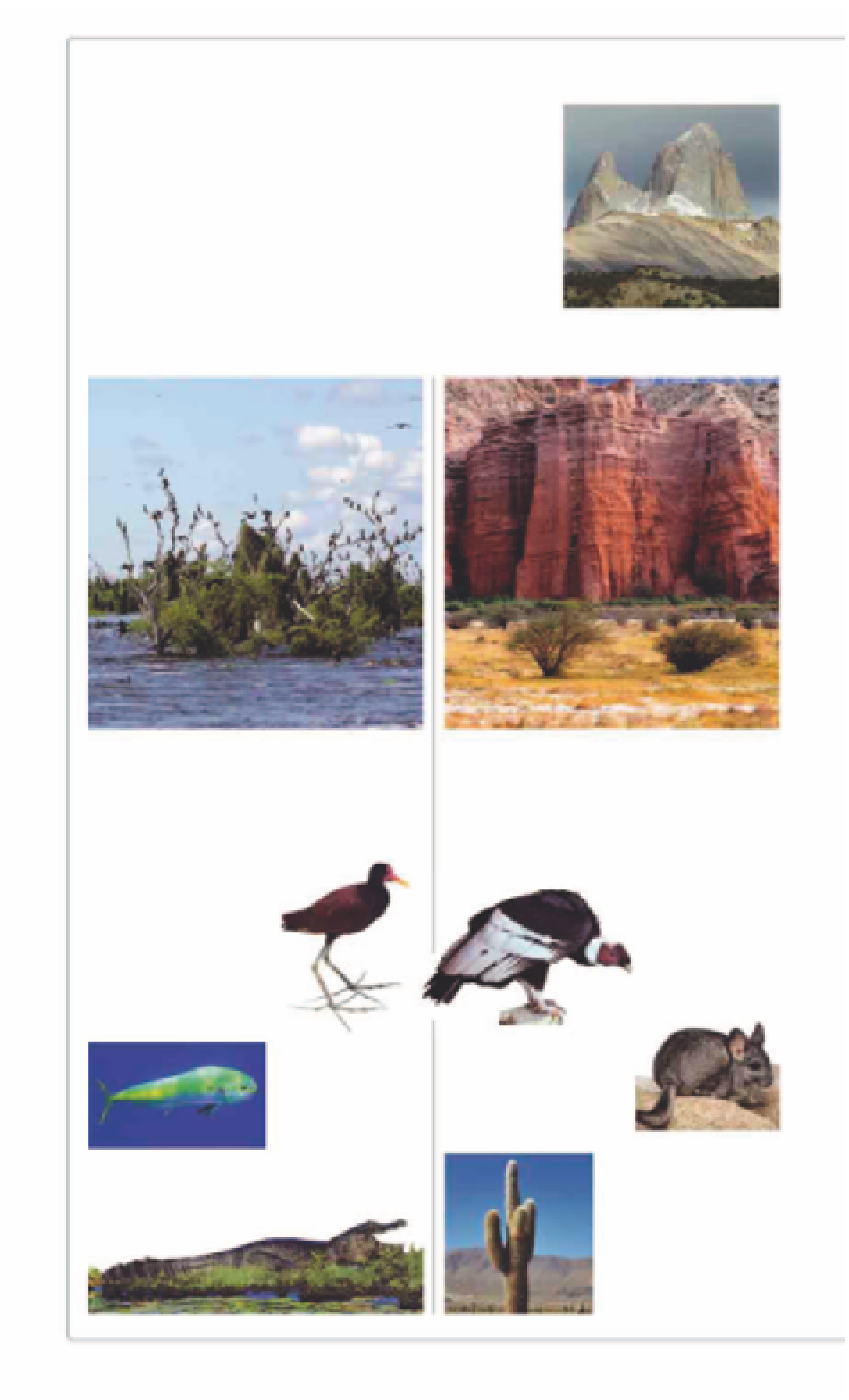Travel Reference
In-Depth Information
Landscape and Wildlife of Argentina
Despite threats to its environment, Argentina still remains
one of the richest countries in the world in its variety of
flora and fauna. It has over 1,000 species of birds, many
of which are unique to the country; 29 sprawling national
parks; and a large number of provincial preserves that
protect a fascinating array of mammals. It owes its natural
wealth to a highly varied topography that covers a range
of climatic zones ranging from arid, harsh environments
dominated by steppe, salt pans, and soaring Andean peaks
to great swathes of grassy plains and wetlands.
View of Mount Fitz Roy in Parque Nacional
Los Glaciares
The Pampas Wetlands
Seasonal rainfall across the Pampas in Buenos
Aires and Entre Ríos leads to the formation of
the channels and vast lagoons of Esteros del
Iberá (
see pp170-71
). It is home to waders and
many other bird species.
Mountains and
Puna
At over 8,000 ft (2,400 m) above sea level, the
puna
(montane grasslands) in Argentina's
northwestern provinces is a mixture of semi-arid
and desert landscapes. On its western edge, it
rises to become the Andes range.
The wattled jacana
, with its huge
feet, seems to walk on
water. It daintily strides
over lily pads and is a
discreet wader until it flies
and flashes its bright-yellow
underwings.
The Andean condor
has
a wingspan of over 9 ft
(3 m). It can be seen
wheeling on the
thermals that form
in the crevasses and
lagoons of the Andes.
The dorado
is king of
Río Paraná
(see p167).
Known for its power, it
is the prize catch of
anglers in the
northeast.
The Royal chinchilla
is a
rodent found in the high
plains. Hunted for its fur, it is
an endangered species.
Yacaré
thrive in the Iberá wetlands, sharing the
banks and islands with capybaras and
howler monkeys.
The cardón cactus
grows
in abundance across the
northwest and is protected
inside Parque Nacional Los
Cardones in the Valles
Calchaquies area
(see p195)
.































